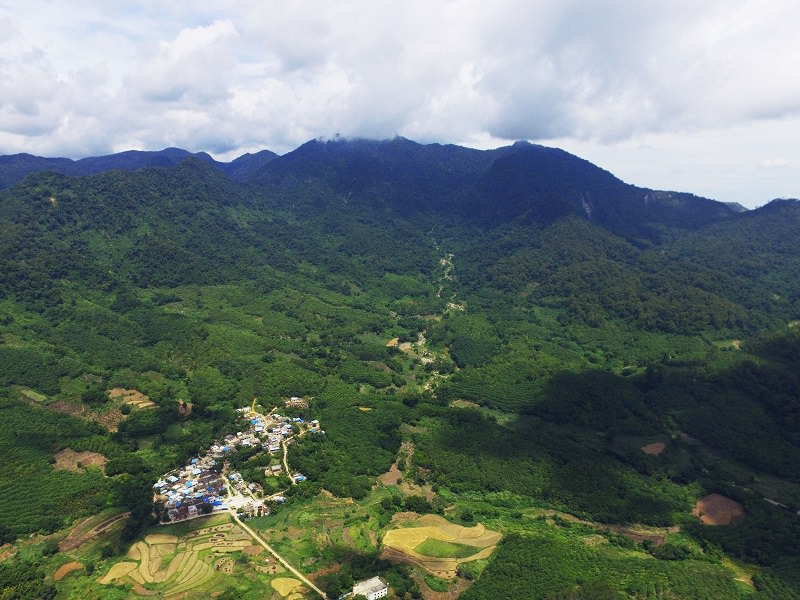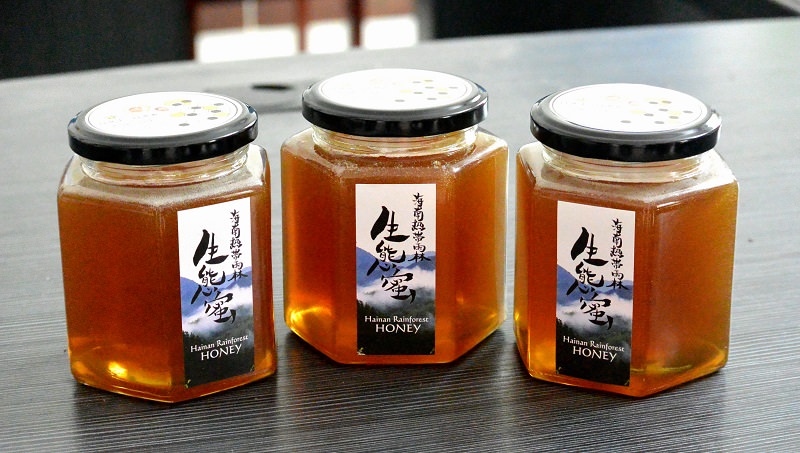Farmers Joined Hands in Conserving the Hainan Gibbon
Gibbons swinging through towering trees in tropical rainforest, to many of us, maybe a scene only appears in wildlife documentaries. The gibbons are so distant from us that their survival appears to have little connection to our daily lives. However, when you look around your home, those gloves, shoes, rubber bands…domestic commodities you use every day are made from rubber, a tree crop that only grows in tropical regions. Rubber mono-plantation is one of the major causes of deforestation in tropical Asia, which had greatly reduced and damaged the habitat of Hainan Gibbon (Nomascus hainanus), the world’s most critically endangered primate.
Natural forest has been converted to rubber mono-plantation right to the edge of Bawangling National Nature Reserve, where the only Hainan Gibbons live.
Being the largest rubber production base in China, Hainan’s rubber mono-plantation makes up more than 16% of the island’s land area, from lowland up to the foothills of tall mountains where remaining good rainforest fragments can be found. In Bawangling National Nature Reserve, the only place in the world supporting the Hainan Gibbons, almost every rural household surrounding the protected area has converted their forestland into rubber mono-plantation. The negative impacts of this forest conversion include significant loss of biodiversity, water and soil pollution, high greenhouse gas emissions and change in local hydrology cycle and microclimate. Nevertheless, the destructive rubber mono-plantation is the major income source of rural villagers.
Is there a way to turn this threat into opportunity? Kadoorie Conservation China (KCC), a department of KFBG, has been exploring a win-win solution for gibbon habitat conservation and villagers’ livelihood. Besides the science-based conservation actions and diverse outreach programmes, KCC is adopting a holistic conservation approach to enhance ecosystem services of the landscape and more importantly, to reconnect human and nature.
Native bitter cardamom and dumping leaf forming the understory of rubber plantation in Hainan.
Nature is our best teacher and in it we find the solution. A natural forest has multiple layers and the soil is always covered. We also make reference to what local farmers have been planting and come up with the idea of an analog forestry system: Shade-tolerant bitter cardamom and dumpling leaves form the understories. The soil is covered by the cut old stems, which act as mulch and sequestrate carbon. Agarwood and rosewood form the upper layer, intercropping with rubber to increase shade for the understories and with such diversification, could aid suppress diseases. Local Hainan honey bees are introduced to the system and take up the important pollination task. The plants we have been promoting are all native to Hainan forests, and mutualism occurs amongst crops, animals, and the villagers who gain economic benefit and relieve livelihood stresses within this rubber analog forestry system.

Hainan native honey bee pollinating bitter cardamom.
To promote rubber analog forestry, KCC has been providing technical and financial support to interested farmers in raising quality bitter cardamom seedlings since last year. In late May, we conducted a workshop to demonstrate such system, followed by the distribution of 10,000 seedlings amongst some 50 households. On the other hand, we are setting up six demonstration sites to test the complex system throughout Hainan. Villagers are very keen to learn about beekeeping and thus we invited trainers and organised workshops, including beekeeping skills and hygienic honey processing. We are very excited about farmers’ passion in learning new skills and hoping the new agricultural practices could make a difference to the Hainan Gibbons by a more sustainable use of the forest. The beekeepers have even proudly developed the bottled “Hainan Rainforest Honey”, using their own smiley faces as bottle labels!

“Hainan Rainforest Honey” produced by native Hainan Chinese bee nurtured by villagers surrounding nature reserves.
Things don’t stop from here. We are now working on monitoring the level of soil organic matter, soil moisture and arthropod diversity. This is our hope that an improved ecosystem can benefit every one of us, and give the Hainan Gibbons a peaceful home.

